Hello, this is Mr. Linen.
Recently, I visited DORSO for the first time and placed my very first custom tailoring order. Here’s a recap of the experience.
目次
Why I Chose DORSO
DORSO is a tailoring house founded in 2022 by Mr. Riki Saito, a seasoned bespoke craftsman and salesperson who built his career over many years at COL in Kobe.
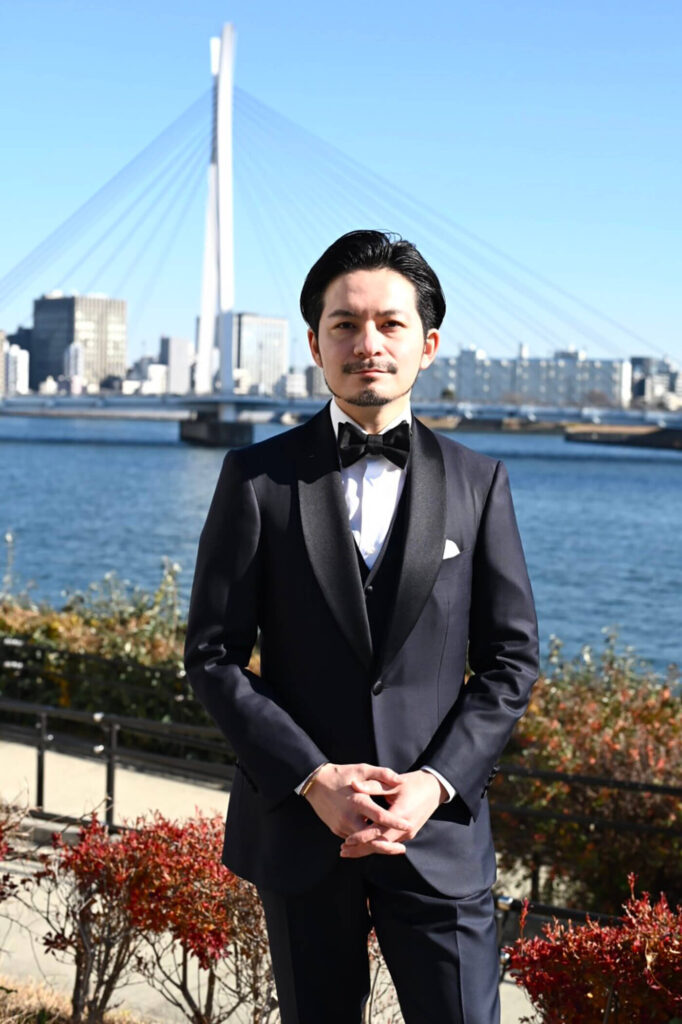
In addition to offering true bespoke tailoring, DORSO also provides Made-to-Measure (MTM) services. Thanks to Mr. Saito’s background as a bespoke tailor, the MTM suits are known for their exceptional precision and quality, which has contributed to the brand’s growing popularity.
DORSO holds trunk shows throughout Japan, as well as in various countries across Asia, the United States, and Canada, further expanding its international reputation.
Up until now, I’ve ordered suits from Yoshida Suit, Michele & Shin, and Atelier Berun. All of them were truly fantastic.
There’s a saying that you should never change your barber or your tailor. But I couldn’t help being drawn to DORSO. I was also curious to meet Mr. Saito, the owner. You can see his creations on Instagram or the DORSO website—some might call them Italian-inspired, but to me, they feel more like they exist outside of any one nationality. Understated, even. And that subtlety was part of what attracted me.
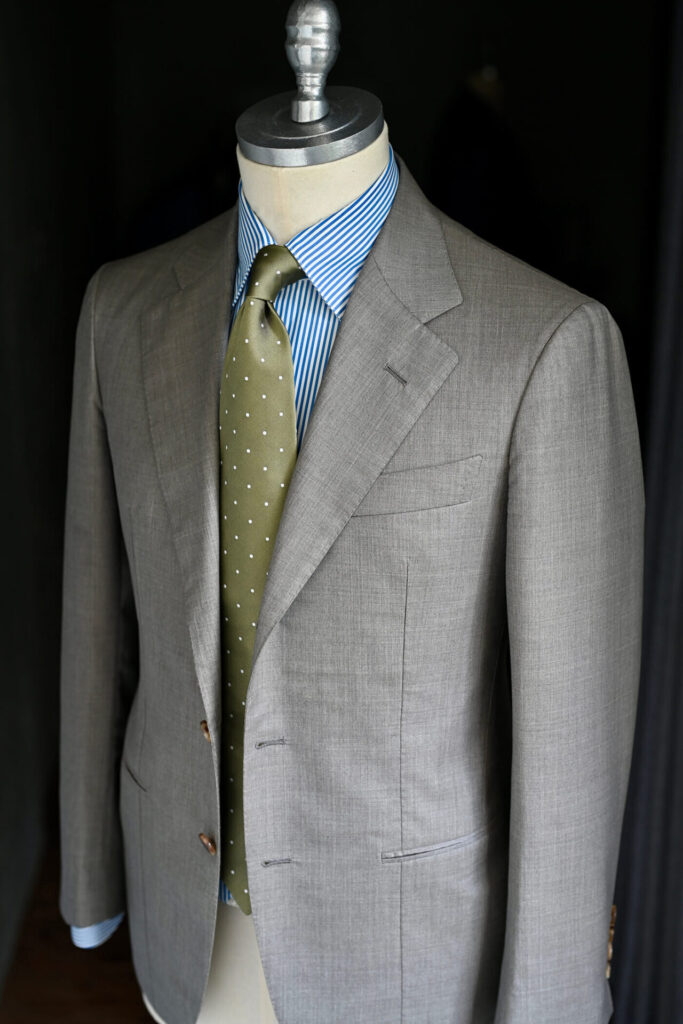
I’d also heard that Mr. Saito is a true bespoke craftsman—he drafts patterns, cuts fabric, and sews everything himself. On top of that, he has a great sense of style. For someone like me who wants to learn more about classic tailoring, he’s a figure I look up to.
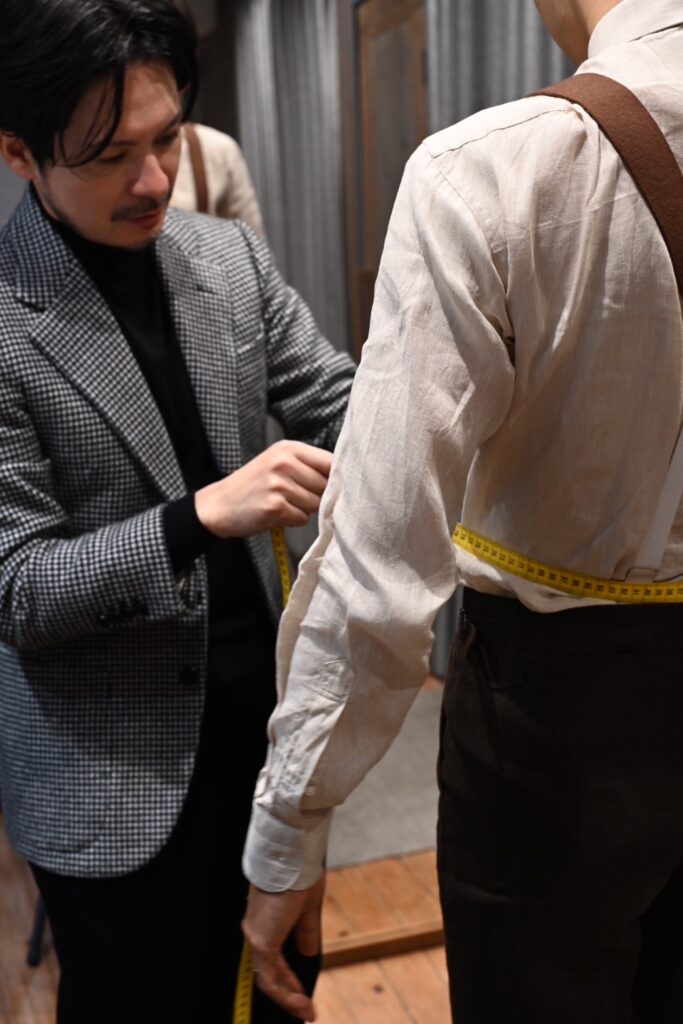
DORSO offers both full bespoke (where Mr. Saito creates the suit from scratch) and MTM—Made to Measure, which is similar to pattern order.
This time, I went with the MTM option. One of DORSO’s standout features is that the basted fitting is free. Basted fitting means you try on the suit before it’s fully sewn—just loosely stitched together—so that any adjustments can be made based on how it fits. After that, the real sewing begins.
Usually, fittings take time and effort, so they’re a paid option. But DORSO includes it for free on your first order, which is incredibly generous. MTM is more affordable than full bespoke, but thanks to this basted fitting, you can still get an exceptional fit—almost like full bespoke.
Once your fitting is done, unless your body shape changes significantly, future orders can be made using the same measurements—no fitting required. That’s a great deal.
So, I made an appointment through their website, took a day off work, and headed over.
I Didn’t Decide What to Order Until I Got There
I hadn’t decided in advance what kind of suit I wanted, and I thought I’d talk it over with Mr. Saito before choosing.
I’ve always been drawn to fabrics with character—linen, tweed, flannel. The kind that gets better the more you wear it. All my previous orders have used those types of materials.
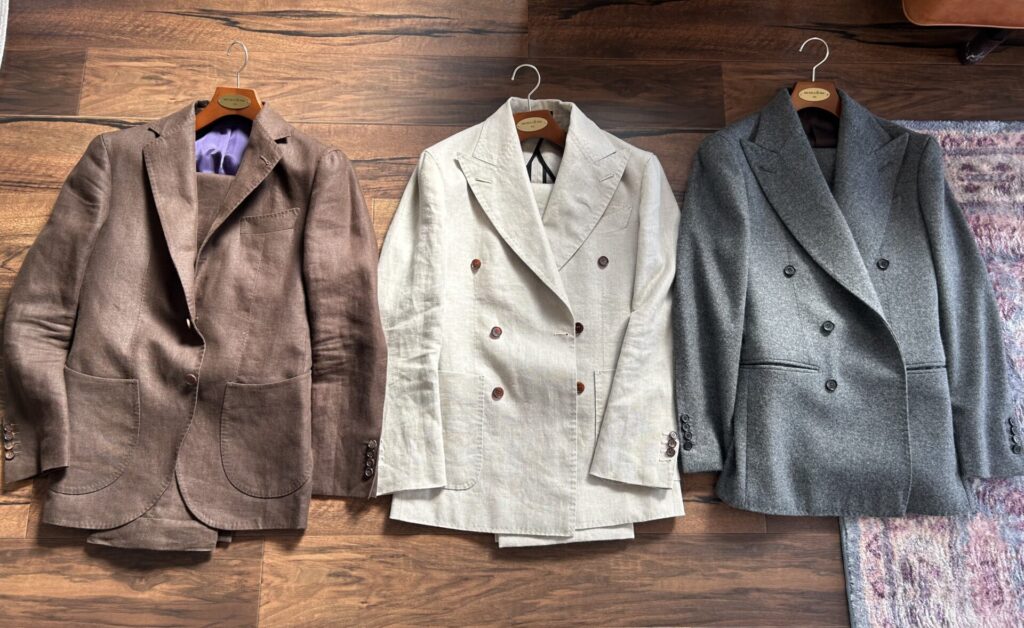
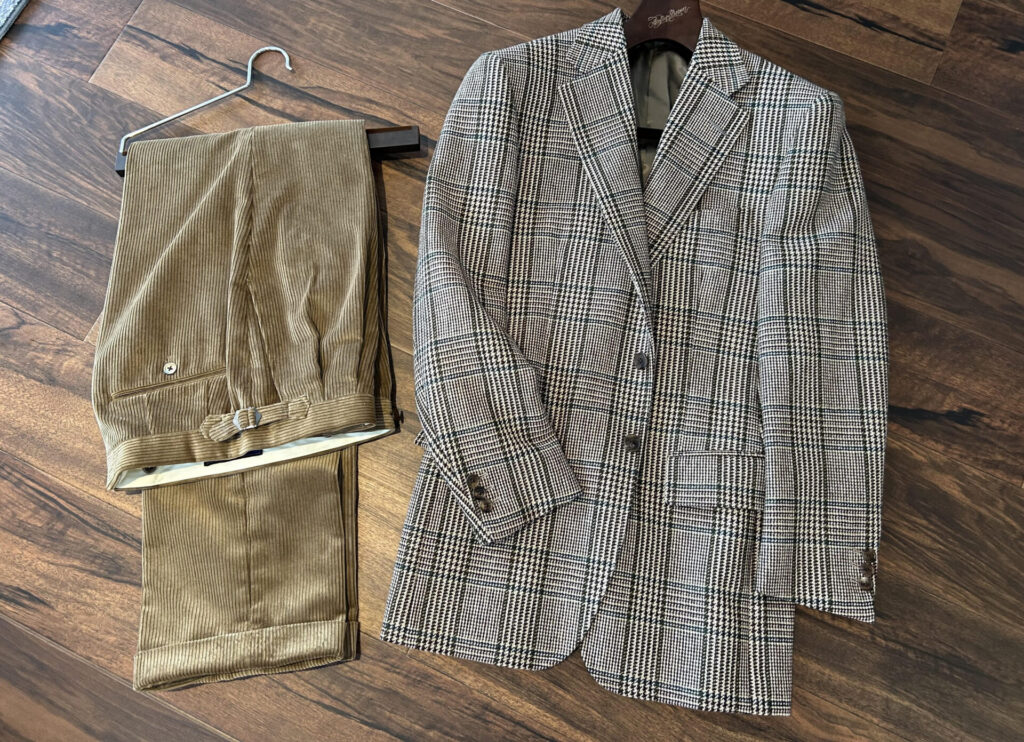
Despite claiming to love classic style, I don’t own a single navy suit. My wardrobe leans heavily toward beige and brown, with the occasional gray.

That hasn’t changed. I was still thinking of going with linen, tweed, or flannel. But I was also open to trying something new this time—something I hadn’t worn before.
So instead of deciding on my own, I went in with the intention of letting Mr. Saito make a recommendation—and I ended up going with the fabric he suggested. As always, I just prefer gray over navy.
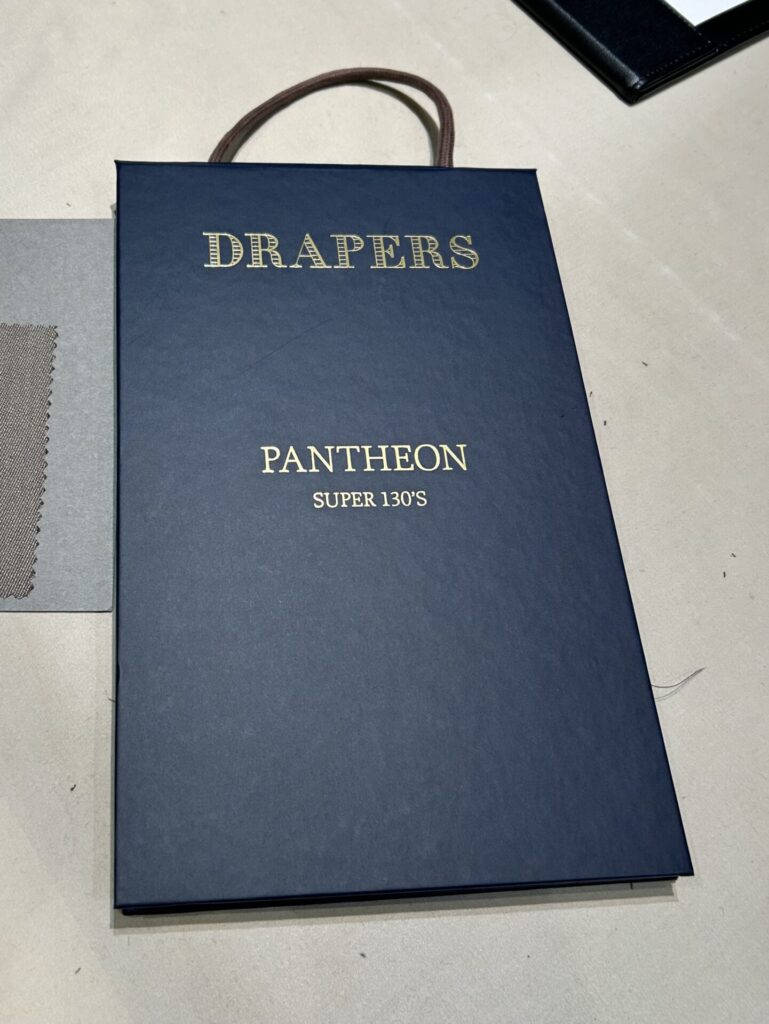
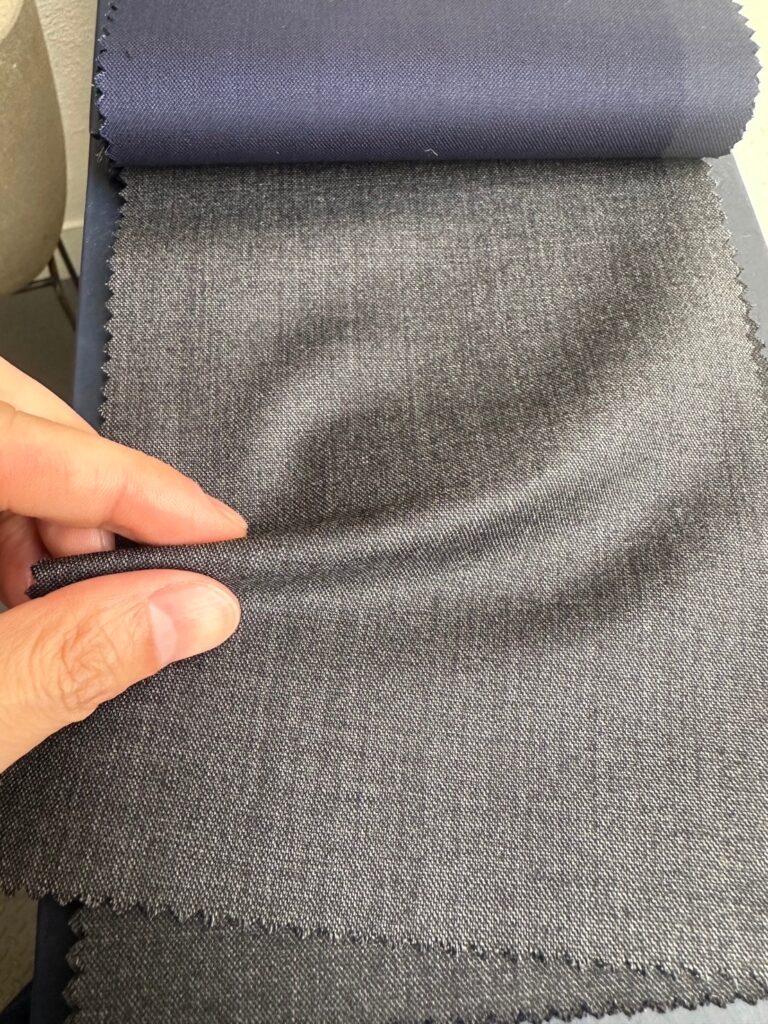
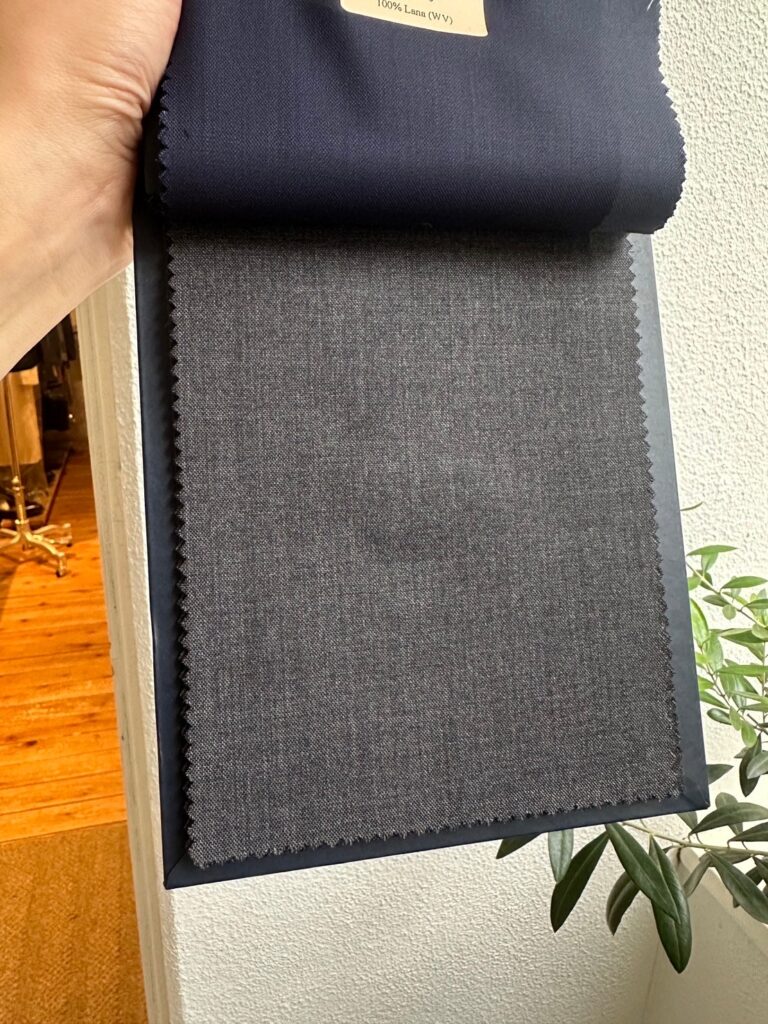
It’s an Italian fabric from Drapers called “sharkskin”—almost solid in appearance. 100% wool, 250g, suitable for year-round wear. All my previous suits were made with heavy British fabrics in the 380g to 480g range, so this was definitely a new experience for me.
You can order just a jacket or a two-piece suit from DORSO, but since the basted fitting is free, I figured I might as well go for the full three-piece and get the most value out of it. That’s just how my mind works.
These days, I wear linen suits even to work and even to other people’s weddings, so I’m not sure when I’ll actually need a formal three-piece like this. But I’m hoping that as I get older, occasions to wear it will naturally arise.
Actually, I think I’ll just wear it regularly. Why not?
The Suit Details
Here’s a bit more detail about what I ordered:
Jacket: single-breasted, 3-roll-2 button, side vents, 9.5cm lapels, flapless pockets
Waistcoat : 6 buttons, 4 pockets, no collar
Trousers: 2 outward pleats, side adjusters, suspender buttons, 22cm hem width, 4.5cm cuffs

All of these were decided by Mr. Saito—not by me.
By the way, DORSO often recommends adding vertical darts that run through to the hem of the jacket hip pockets. He asked if I wanted that detail, but I decided to go with a more standard finish this time—no darts running through.

About the Optional Features
As for optional features, DORSO offers the following:
-Increased ease in the shoulder
-Increased ease in the sleeve
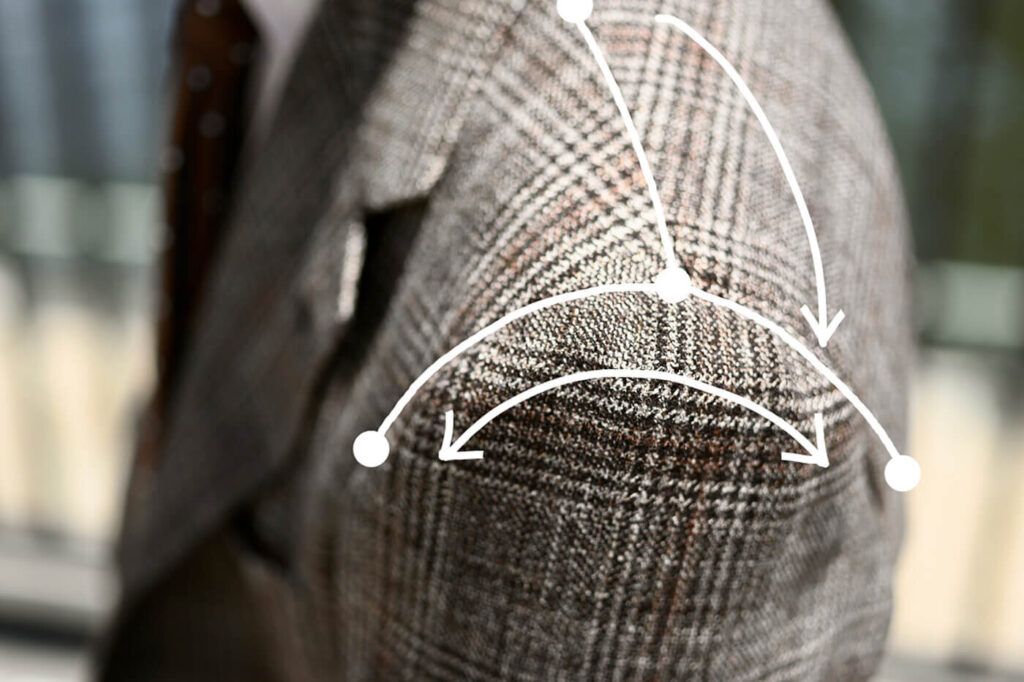
-Hand-attached collar construction
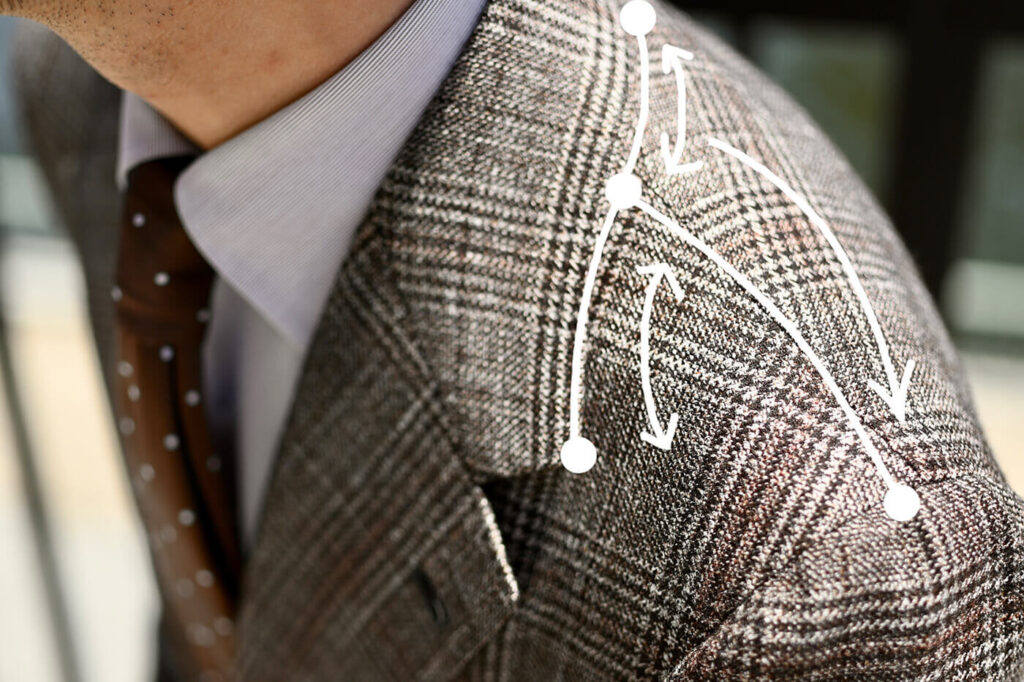
-Curved gorge line shaping

-Hand-sewn flower loop (boutonnière)
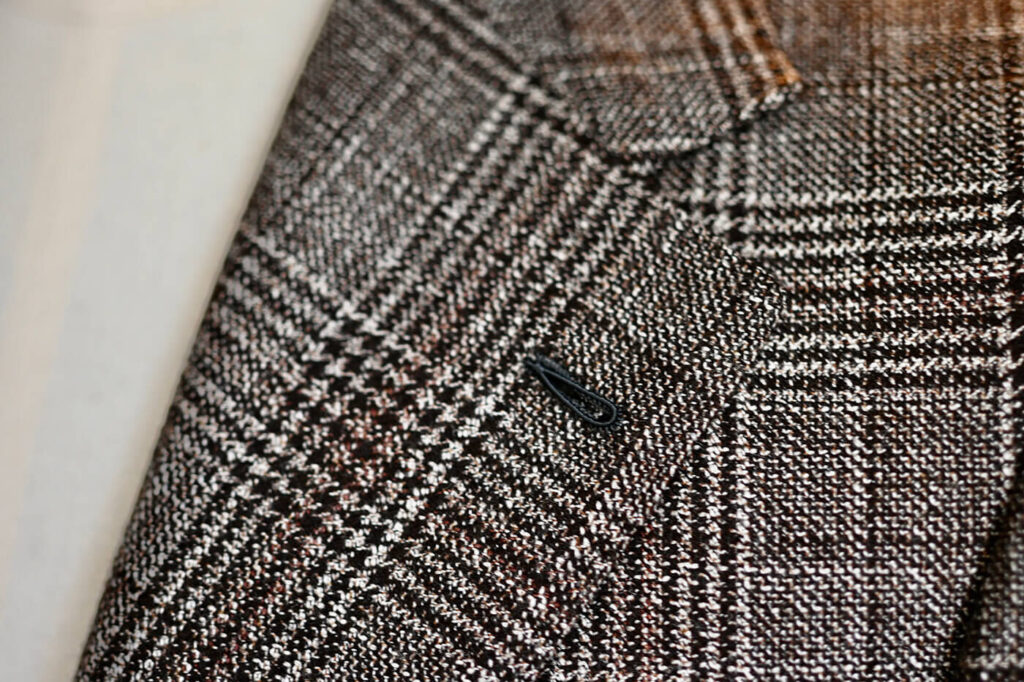
Mr. Saito mentioned that the increased ease in the shoulders and sleeves really improves comfort. Still, I figured the suit would be well-made even without those options, and honestly, I didn’t think I’d notice the difference in feel. So at first, I thought I’d skip them.
I’ve never found jackets uncomfortable before, and if there’s no visible difference, why not save money? That was my thinking—as a tailoring novice.
But then Mr. Saito said, “With more ease in the shoulders and sleeves, it actually looks better too—more dimension.” That gave me pause.
He showed me two jackets—one with the added ease and one without—for comparison.
To be honest, I couldn’t really tell the difference.
Still, I decided to add the shoulder and sleeve ease options, along with the hand-sewn flower loop.
Why? Because while I may not notice now, maybe someday I will. And if that day comes, I didn’t want to regret not including those options. I want to love this suit 100%.
As for the flower loop—it’s purely vanity. I just want people to see it and think, “That’s a nice suit.” Simple as that.
By the way, I didn’t go for the “Milanese” style flower loop, which creates a raised effect. Instead, I chose a style that looks like a regular machine stitch from a distance, but up close, you can tell it’s been sewn by hand.
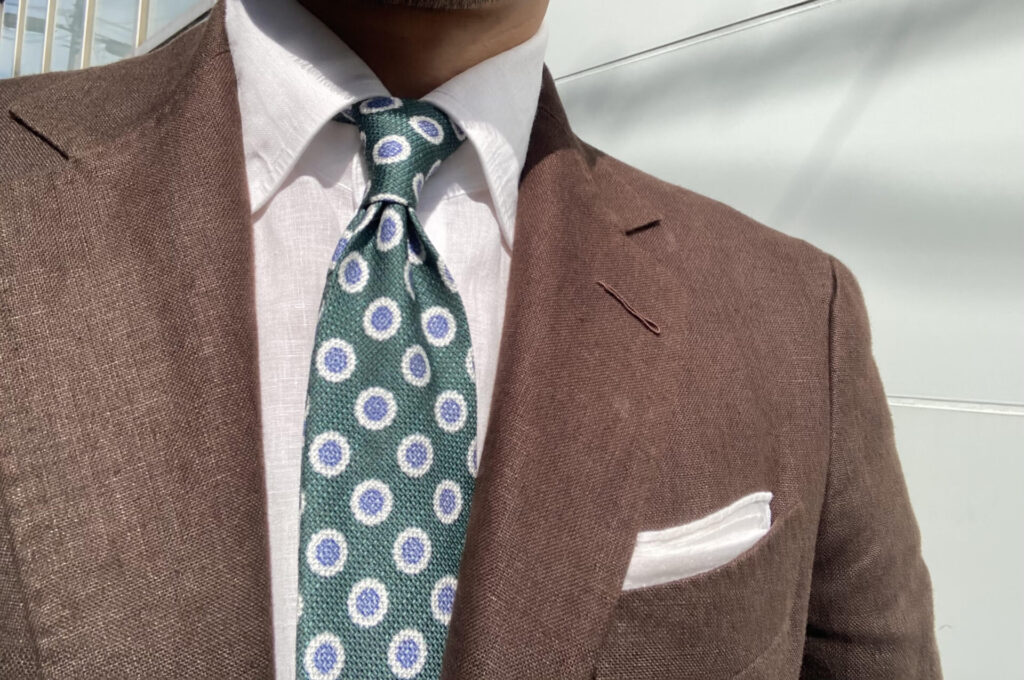

How Much Did It Cost?
The total came to around 280 000 JPY, which is around 2 000 USD.
Roughly 250 000 JPY for the suit itself, and 30 000 JPY for the options.
I don’t know much about fabric rankings or pricing, but for a three-piece suit—and with the basted fitting included—I think that’s very fair. Actually, it’s quite a good deal.
Now I just have to wait about a month for the fitting. Can’t wait.
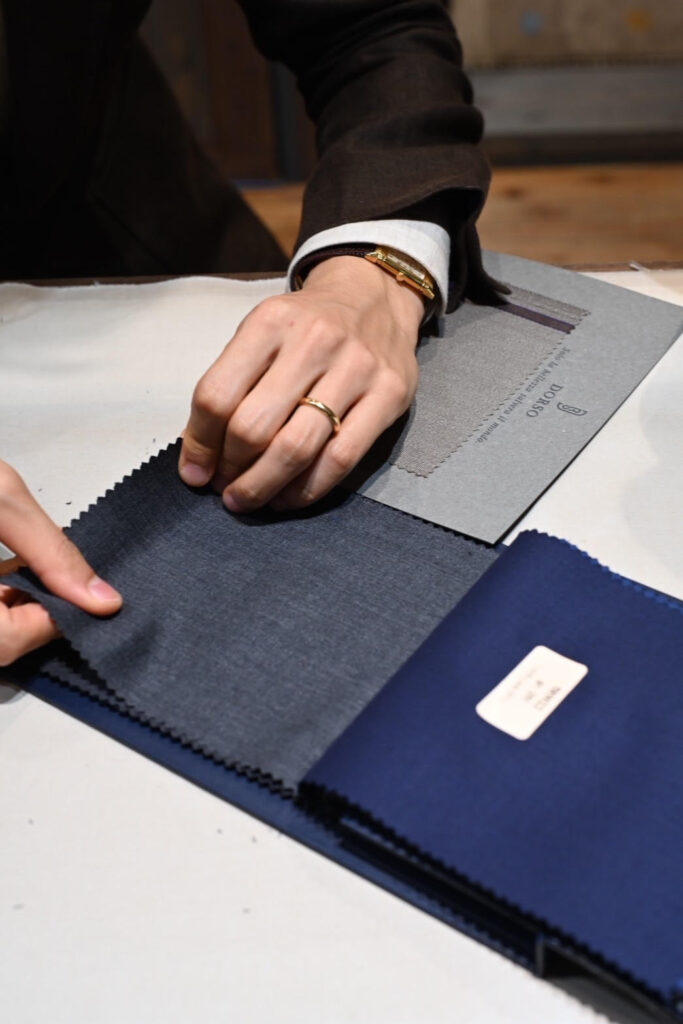
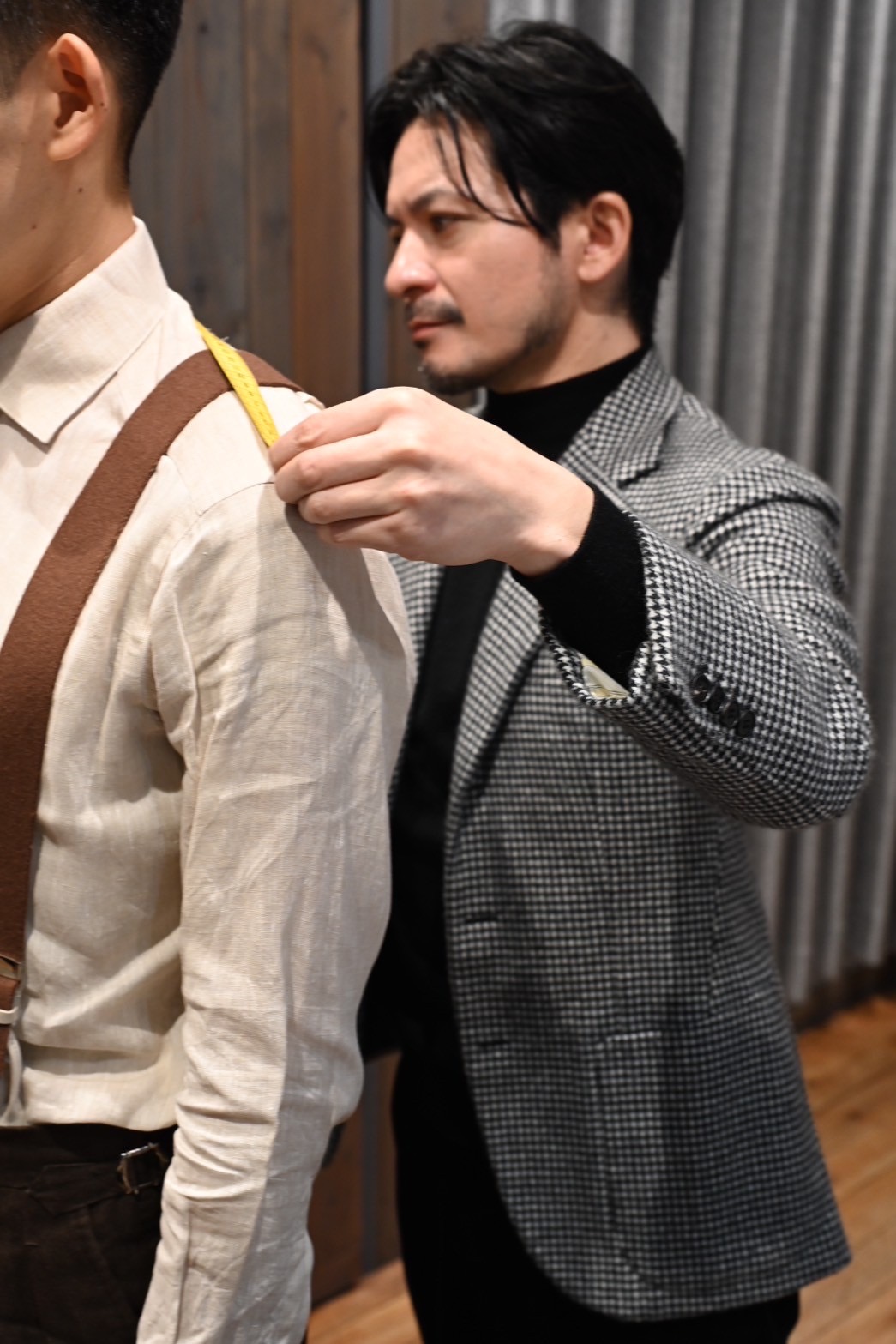







コメント